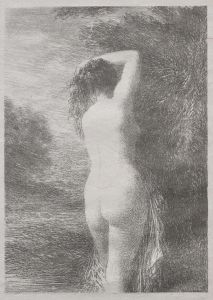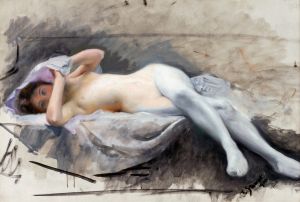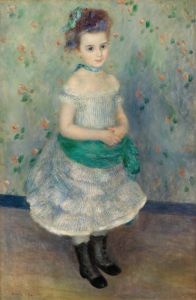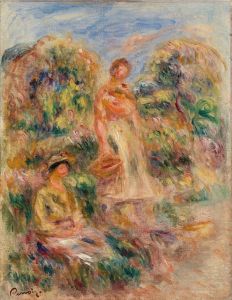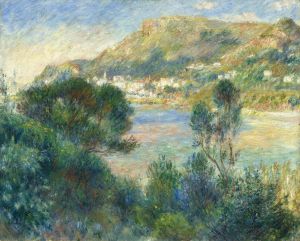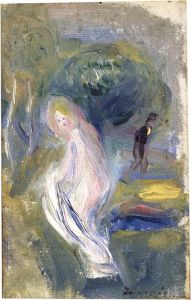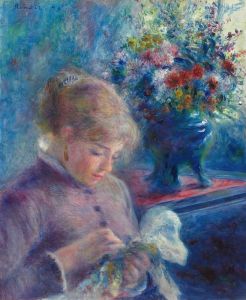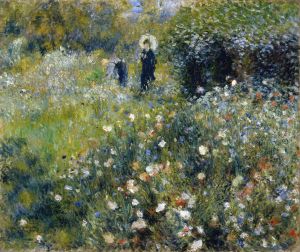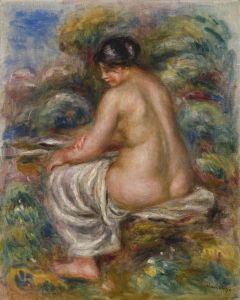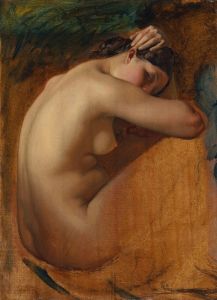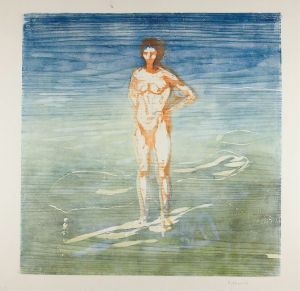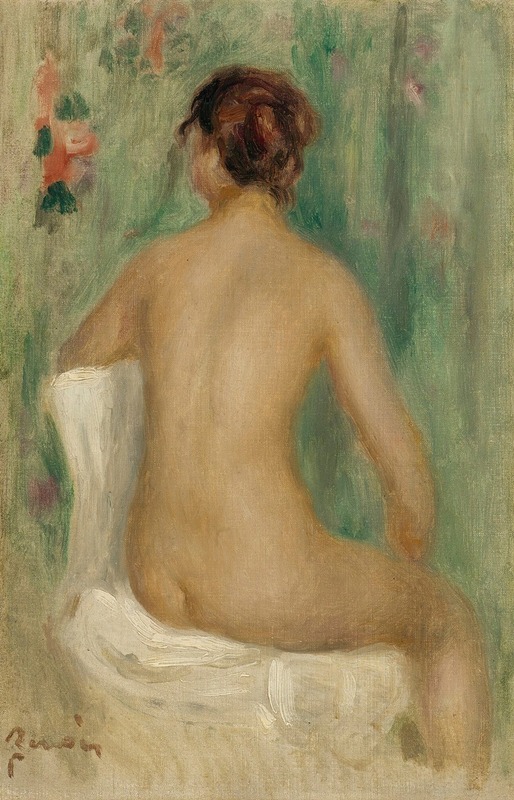
Nu Assis, De Dos
A hand-painted replica of Pierre-Auguste Renoir’s masterpiece Nu Assis, De Dos, meticulously crafted by professional artists to capture the true essence of the original. Each piece is created with museum-quality canvas and rare mineral pigments, carefully painted by experienced artists with delicate brushstrokes and rich, layered colors to perfectly recreate the texture of the original artwork. Unlike machine-printed reproductions, this hand-painted version brings the painting to life, infused with the artist’s emotions and skill in every stroke. Whether for personal collection or home decoration, it instantly elevates the artistic atmosphere of any space.
"Nu Assis, De Dos" (Seated Nude, from the Back) is a painting by the renowned French artist Pierre-Auguste Renoir. Renoir, a leading figure in the Impressionist movement, is celebrated for his vibrant light and saturated color, often focusing on people in intimate and candid compositions. This particular work is an exquisite example of his mastery in portraying the human form with a sense of warmth and sensuality.
Created in the late 19th century, "Nu Assis, De Dos" depicts a nude woman seated with her back to the viewer. The painting is characterized by Renoir's signature soft brushstrokes and delicate use of color, which together create a sense of softness and realism. The woman's posture is relaxed, and the composition emphasizes the natural curves of her body, showcasing Renoir's ability to capture the beauty of the human form in a naturalistic and unidealized manner.
Renoir's approach to the nude was influenced by his admiration for the classical tradition, yet he brought a modern sensibility to his work. Unlike the more formal and idealized nudes of earlier periods, Renoir's nudes are often depicted in informal settings and poses, reflecting a more intimate and personal view of the subject. This painting is no exception, as it conveys a sense of privacy and introspection, inviting the viewer to appreciate the simple beauty of the human body.
The palette of "Nu Assis, De Dos" is dominated by warm, earthy tones, which enhance the sense of intimacy and warmth in the painting. The subtle gradations of color and light on the woman's skin demonstrate Renoir's skill in rendering the effects of light and shadow, creating a lifelike and tactile quality. The background is kept relatively simple, ensuring that the focus remains on the figure and her serene presence.
Renoir's nudes were often met with mixed reactions during his lifetime. While some critics praised his ability to capture the natural beauty of the human form, others found his works too sensual or lacking in the idealization that was traditionally associated with the genre. However, over time, Renoir's nudes have come to be appreciated for their honest and affectionate portrayal of the human body, and "Nu Assis, De Dos" is a testament to his enduring legacy as a master of the nude.
Today, "Nu Assis, De Dos" is recognized as an important work within Renoir's oeuvre and within the broader context of 19th-century art. It exemplifies the artist's unique ability to blend classical influences with modern techniques and sensibilities, resulting in a work that is both timeless and deeply personal. The painting continues to be admired for its beauty, technical skill, and the intimate glimpse it offers into Renoir's artistic vision.





